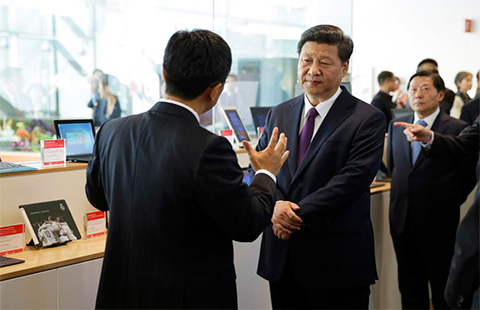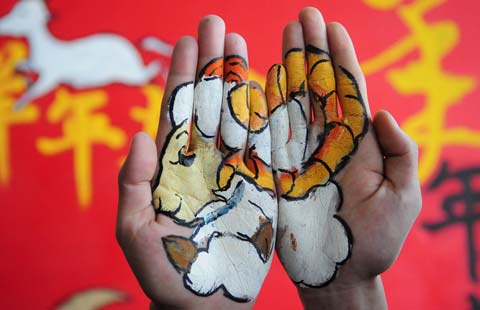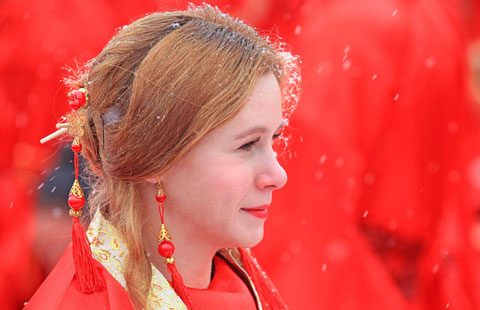IV. Improving Standards of Living for All
Since the founding of the autonomous region, and especially since the launch of the reform and opening-up drive, Xinjiang has enjoyed overall economic and social development, and people of the various ethnic groups in the autonomous region have all benefitted from the fruits of the reform and development. Since 2010, Xinjiang has stepped up efforts and input in improving the people's living standards, undertaking over 500 key projects in this regard over the past six consecutive "people's livelihood years," with the expenditure on improving the people's livelihood accounting for over 70 percent of the region's yearly total public spending. This has made these six years a period in which the people are benefitted the most and see the greatest improvement in their material well-being and cultural life.
Employment channels are constantly expanding. In 2014, the registered urban unemployment rate of Xinjiang was 3.2 percent. From 2010 to 2014, 2.5 million new urban jobs were created, averaging a yearly growth of 500,000. In 2010, Xinjiang established a registration system for people with difficulties in finding work and for families of which no member was gainfully employed. By 2014, under this system Xinjiang had helped 29,000 members of these "zero-employment" families find jobs, cutting the number of zero-employment families by 26,000. From 2010 to 2014, Xinjiang provided jobs to 303,000 university graduates, with the employment rates of university graduates and university graduates of ethnic minority origins reaching 88.6 and 82.7 percent, respectively. By May 2011, it had virtually resolved the employment problems of 75,000 unemployed graduates of junior colleges and technical secondary schools who had registered before the end of 2009, of whom 84.6 percent came from ethnic minority groups. Some 1.66 million job opportunities were created for rural surplus labor in 2009. This figure increased to 2.85 million in 2014. During this five-year period, the relevant wage bill totaled RMB56.6 billion.
The life of the people has kept improving. In 2014, the per-capita disposable income of urban residents averaged RMB21,881, an increase of 51.2 fold over that of 1980, representing an average annual growth of 12.3 percent. This also represented an increase of more than RMB9,624 over that of 2009. The per-capita net income of rural residents was RMB8,114, increasing by 41.4 fold as compared with that of 1980, averaging an annual growth of 11.5 percent. This was an increase of more than RMB4,231 as compared with 2009. The Engel coefficient of urban and rural residents continued to decline, from 36.3 percent and 41.5 percent respectively in 2009 to 31.3 percent and 34.5 percent in 2014.

 Here's what's on the menu for the state dinner
Here's what's on the menu for the state dinner
 President Xi visits Microsoft campus in Seattle
President Xi visits Microsoft campus in Seattle Xi revisits Lincoln High School after 1993 bond
Xi revisits Lincoln High School after 1993 bond
 Chinese, US business leaders gather at roundtable meeting
Chinese, US business leaders gather at roundtable meeting Xi visits assembly line of plane manufacturer Boeing in US
Xi visits assembly line of plane manufacturer Boeing in US First Lady tours Fred Hutchson Cancer Research Center
First Lady tours Fred Hutchson Cancer Research Center
 Boeing to sell 300 planes to China
Boeing to sell 300 planes to China Sino-US ties need more understanding: Xi
Sino-US ties need more understanding: Xi















